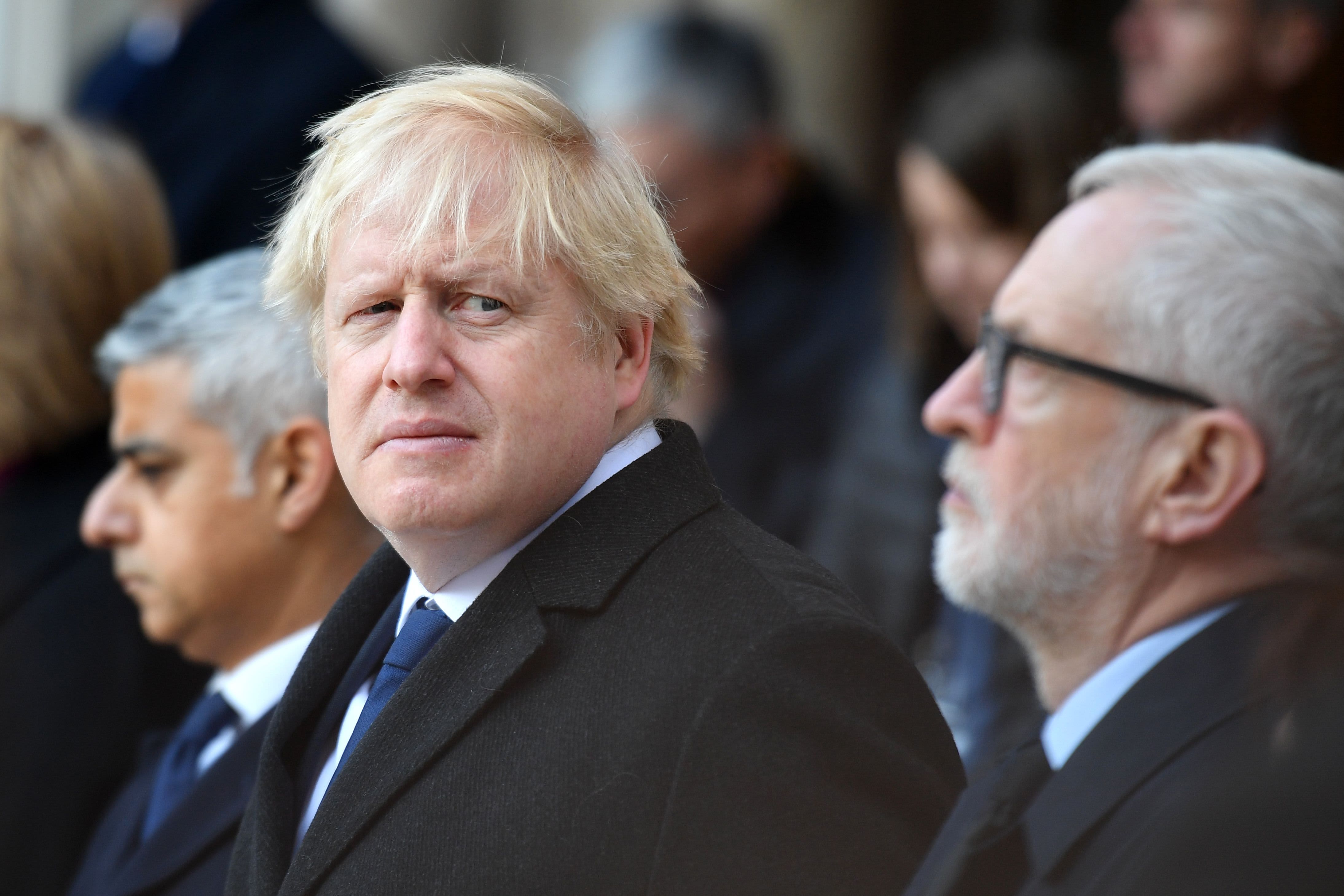Hits: 14

Britain’s Prime Minister Boris Johnson and opposition Labour party leader Jeremy Corbyn pay tribute to the victims of the London Bridge terror attack on December 2, 2019.
DANIEL LEAL-OLIVAS | AFP | Getty Images
With British voters heading to the polls on Thursday for the third time in four years, markets have mostly priced in a majority for Prime Minister Boris Johnson’s Conservative Party.
YouGov’s final poll projected a 28-seat majority, considerably tighter than previous estimates, and indicated that neither a hung parliament nor a more comprehensive Conservative majority can be ruled out.
Sterling slid on Wednesday morning as some caution returned to a currency market which had largely priced in a clear Conservative victory. Speculative sterling shorts, in which investors bet on the pound depreciating, have reduced considerably since mid-September.
While a Conservative majority is seen as the most sterling-positive result, the impact of various potential outcomes would likely be asymmetrical, with less pronounced gains on the market-friendly outcome and more meaningful losses should Labour surprise.
Timeline
The initial price action is likely to take place around the 10:00 p.m. GMT (5:00 P.M. ET) exit poll on Thursday, at which point all previous polling becomes irrelevant. A clear blue majority sends the pound up, while anything else likely exerts downward pressure.
Results will start to come in from around 10:45 p.m., but a significant proportion of seats declared in the first two hours are in the main opposition Labour Party‘s heartlands. Many of these areas also voted Leave in the 2016 Brexit referendum, however, and are therefore seen as being in play for the Conservatives and the Brexit Party.
A Conservative win in any of these seats would indicate that a large majority is “highly likely,” according to Stephen Gallo, European head of FX strategy at BMO Capital Markets, cementing sterling’s upward momentum.
“If (Labour) retain these seats, it will be important to watch two additional factors: how much of a swing to CON from LAB has there been and what portion of the vote has gone to the Brexit Party (BXP)?” Gallo said in a note Wednesday. The Brexit Party is not standing candidates in any Conservative held seats.
“If these results validate what the exit poll predicted, then FX investors are ‘home free’ on trying to get a handle on the final result,” Gallo added.
A host of marginal seats are due to be called after 00:30 a.m. GMT, and tactical voting along Brexit lines in key marginals could add to uncertainty. Further price action is possible as the results of these seats are announced.
Scenario 1: A Conservative majority
Analyst expectations for sterling gains differ based on the size of the Conservative majority.
ING chief EMEA FX strategist Petr Krpata projects that a large majority of 30 or more seats would push GBP to $1.35 in the immediate aftermath and take EUR/GBP down to £0.82, while a thin majority would mean fractionally more contained advances to $1.33 and £0.83.
Gallo anticipates that only 335 or more Conservative seats, giving a strong majority, will drive sterling north. This is based on a benchmark of 639 voting seats in the commons rather than the official 650, assuming that Sinn Fein, whose MPs ceremonially refuse to take their seats in the House of Commons, win 7 seats while 4 seats are allocated to speakers.
Johnson can therefore theoretically govern on 322 seats, a technical majority of one.
“However, selling the GBP would be the correct response in the event of 322, because a technical majority of one for CON would not yield a government that has much longevity at all. In fact, the UK could find itself in early elections again by the spring if 322 is the final result,” Gallo said.
Matthew Farrell, investment specialist at London & Capital, told CNBC via telephone that a working majority of just 10 or more for the Conservatives would mean a stable evening’s trade, with cable gradually advancing to around $1.35 in the ensuing days.
“The upside is limited in the short term because the positioning has normalized in the last few months, so there will be no short squeeze if we get a Conservative majority, which is usually where you see the violent moves,” Farrell added.
Hung Parliament
ING’s financial fair value model has sterling currently trading a 2% positive “Brexit resolution premium,” Krpata said, meaning any depreciation will likely be much sharper than the upside potential of the most likely outcome on the night.
A hung parliament would send EUR/GBP towards £0.87 and GBP/USD down towards $1.26 over the next few days as sterling speculative shorts are rebuilt.
“On a short-term basis, sterling is trading more than 2% expensive versus the euro because market is already partly pricing in that market friendly outcome. If it is a Conservative victory, indeed there will be gains, but they will be less pronounced than the losses in the case of a hung parliament,” he told CNBC.
Farrell suggested the downside momentum could be even greater, taking cable to $1.25, since a hung parliament “sends us back into the cycle of Brexit uncertainty and probably gives up most of the ground made.”
Labour-led government
The unlikely outcome of a fragile Labour-led minority government would cause the biggest downside shock to GBP, Krpata predicted.
If the exit poll shows a surprising amount of red, sterling could be driven down to $1.24 and the euro up to £0.89.
“This reflects the market not pricing such a scenario, initial market concerns about nationalization and fiscal concerns (i.e. a material rise in borrowing needs as implied by the Labour manifesto,” he said.
“While the prospects of a second referendum could eventually help to stabilize GBP (as well as lower the probability that Labour policies would be introduced in full under a minority Labour-led government) the initial reaction would likely be GBP negative,” he added..
Be the first to comment